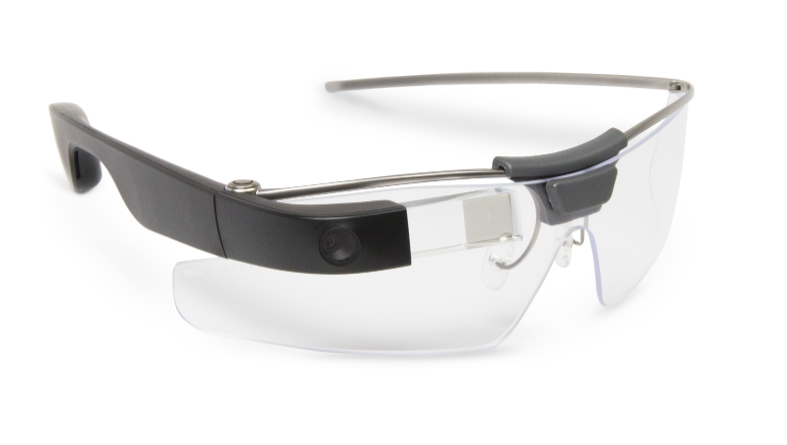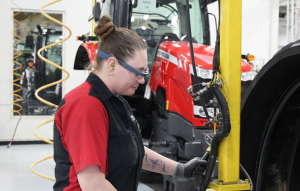
Articles
Reviews
Google Glass 2 is Transforming Workplace Training
By Cait Etherington
July 18, 2017
Many of us remember the hype and fast fall of Google Glass. For a brief moment in tech history, people imagined that in the near future, we’d all have apps in our eyes and no longer need to fumble for our iPhones at awkward moments. This dream was quickly squashed as consumers rejected Google Glass as a flawed and gimmicky blip in tech history. While many people assumed that Google Glass was relegated to the junk yard (or worse yet, sent to a secret burial ground in the dessert, which is where other tech disasters, including the ill-fated Apple Lisa, allegedly have ended up), today’s announcement confirms that Google Glass lives on. In the end, however, factory workers not hipsters appear to be Google Glass’s ultimate target market.
Google Announces the Glass Enterprise Edition
 Although Google Glass was officially abandoned in 2015, Alphabet, Google’s parent company, continued to explore Glass’s future. Rather than focus on developing a product with widespread consumer appeal, however, they focused on building a version of Glass with specific applications for the workplace and not just any workplace. So far, Glass Enterprise Edition (Glass EE) appears to be specifically targeting workers in the manufacturing sector. Indeed, the new version of Glass is being billed as “a hands-free device, for hands-on workers.”
Although Google Glass was officially abandoned in 2015, Alphabet, Google’s parent company, continued to explore Glass’s future. Rather than focus on developing a product with widespread consumer appeal, however, they focused on building a version of Glass with specific applications for the workplace and not just any workplace. So far, Glass Enterprise Edition (Glass EE) appears to be specifically targeting workers in the manufacturing sector. Indeed, the new version of Glass is being billed as “a hands-free device, for hands-on workers.”
There are already signs that Glass EE is gaining top marks from professionals in the manufacturing sector. Peggy Gullick, the business process improvement director at AGCO, which manufactures Massey Ferguson tractors, has seen firsthand just how impactful Glass EE has been on AGCO’s shop floor. Gullick describes the arrival of Glass EE as “a total game changer.” General Electric, Samsung, and Volkswagen are also among the dozens of companies already using Glass EE in their workplaces.
Glass EE’s Workplace Training Impact
Over the past decade, there has been a growing effort to bring virtual reality (VR) and augmented reality (AR) based training to the workplace. While there has been some success in specific professions, including medicine and aviation, with Glass EE, there now appears to be a real possibility that VR and AR will start to have a notable impact on training and assessment in other sectors, including manufacturing.
As stated on the Glass’s website, with Glass EE you can, “Access training videos, images annotated with instructions, or quality assurance checklists that help you get the job done, safely, quickly and to a higher standard. And Glass stays out of your way when you don’t need it.” But Glass EE doesn’t simply offer workers the ability to reference training materials while staying hands on. One can also use Glass EE to bring supervisors into their work environment to offer real-time assistance. As stated on Glass EE’s website, with this never version of Glass, “You can connect you with coworkers in an instant, bringing expertise to right where you are. Invite others to ‘see what you see’ through a live video stream so you can collaborate and troubleshoot in real-time.”
How Glass EE will Impact Mobile Training
 Glass EE’s impact on workplace training and mobile training is potentially huge. Moving forward the division between training and work will continue to collapse as more workers bring their training on to the shop floor and into other contexts. Apprentice chefs, electricians, and bricklayers will increasingly receive part of their training via guided instructions delivered via Glass EE (and similar devices, which are bound to soon begin emerging). Similarly, as Glass EE becomes more discrete, we will likely see more new retail associates wearing them too. Of course, offering real-time training to new employees will only be part of Glass EE’s function.
Glass EE’s impact on workplace training and mobile training is potentially huge. Moving forward the division between training and work will continue to collapse as more workers bring their training on to the shop floor and into other contexts. Apprentice chefs, electricians, and bricklayers will increasingly receive part of their training via guided instructions delivered via Glass EE (and similar devices, which are bound to soon begin emerging). Similarly, as Glass EE becomes more discrete, we will likely see more new retail associates wearing them too. Of course, offering real-time training to new employees will only be part of Glass EE’s function.
With Glass EE, there is now a viable way for employers to collect data about their trainees and permanent employees and this includes data that may have previously been unobtainable, including information about their level of attention, movements, and interactions with clients. This data can in turn be used to carry out more accurate employee assessments, fine-tune training (and retraining) needs to respond to each employee’s specific deficits, and address serious safety and compliance concerns on the job. Of course, this also means that not all employees and worker unions will likely welcome Glass EE. Indeed, just as Google Glass raised privacy concerns, it seems likely that as Glass EE finds traction in more workplaces, privacy concerns and concerns about workers’ rights will arise. Despite the potential for resistance, however, early signs suggest that Google Glass’s comeback will likely be far more successful than its original launch and have a notable impact on workplace training, specifically mobile learning.









No Comments